You’ll achieve precision gemstone faceting by mastering five essential techniques. Set exact angles using a protractor or digital display instead of guessing, and control depth with careful height adjustments so facets meet at the center. Choose appropriate index gears for consistent placement, start with coarse laps before switching to finer ones, and maintain spotless equipment throughout every stage. These fundamentals will help you discover the advanced methods that separate amateur work from professional results.
Master Your Angle Settings for Consistent Results
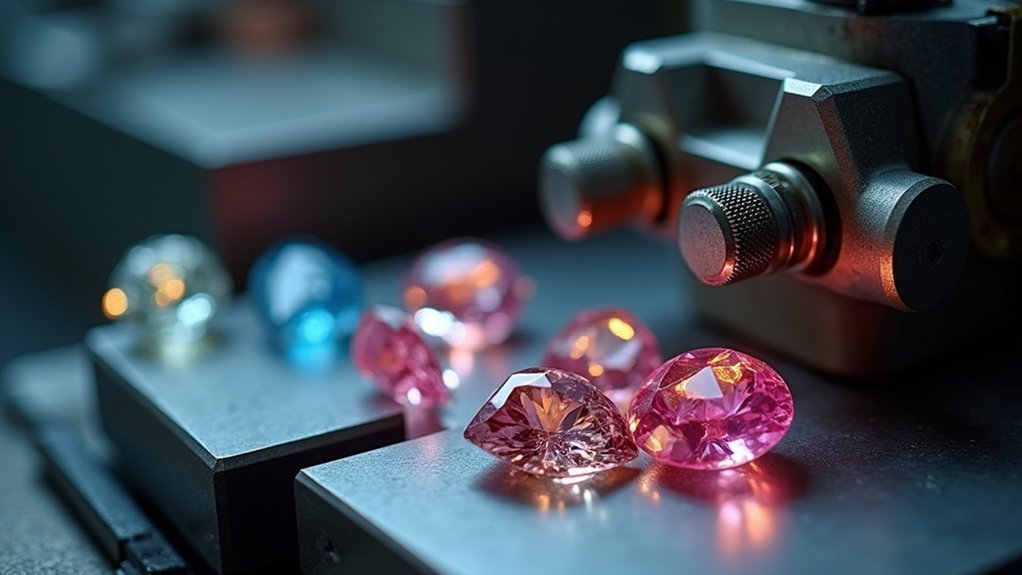
One fundamental skill separates novice gem cutters from experienced professionals: the ability to set precise angles that produce consistent, brilliant results. Your faceting machine’s protractor or digital display becomes your most valuable tool for achieving these exact angle adjustments.
Don’t rely on guesswork—precise measurements are essential throughout the faceting process.
Precision trumps instinct in faceting—every angle measurement determines whether your gemstone achieves maximum brilliance or falls short of its potential.
You’ll need to balance your angle settings with proper depth of cut to maximize brilliance. Shallow cuts reduce light performance, while excessive depth wastes valuable material.
As you develop your skills, practice the cutting by sound technique to detect when facets are meeting correctly at the gemstone’s center.
Regularly inspect your work during cutting, making micro-adjustments to maintain consistency.
Control Depth and Index Positioning With Precision
While angle mastery forms the foundation of quality faceting, your control over depth and index positioning determines whether those angles translate into a perfectly symmetrical gemstone.
Height settings control how deeply you cut each facet, directly impacting your finished gemstone’s brilliance. Make careful depth adjustments during the cutting process to guarantee facets meet precisely at the center without removing excess material.
Index gears, available in 64 and 96 settings, control your gem’s rotation for consistent facet placement. These gears guarantee perfect symmetry as you facet gemstones around their circumference.
Listen for sound changes while cutting—this technique provides immediate feedback on your depth and angle adjustments’ effectiveness. Regular inspection during gemstone faceting helps you maintain precision throughout the entire process.
Optimize Your Cutting Sequence and Lap Selection
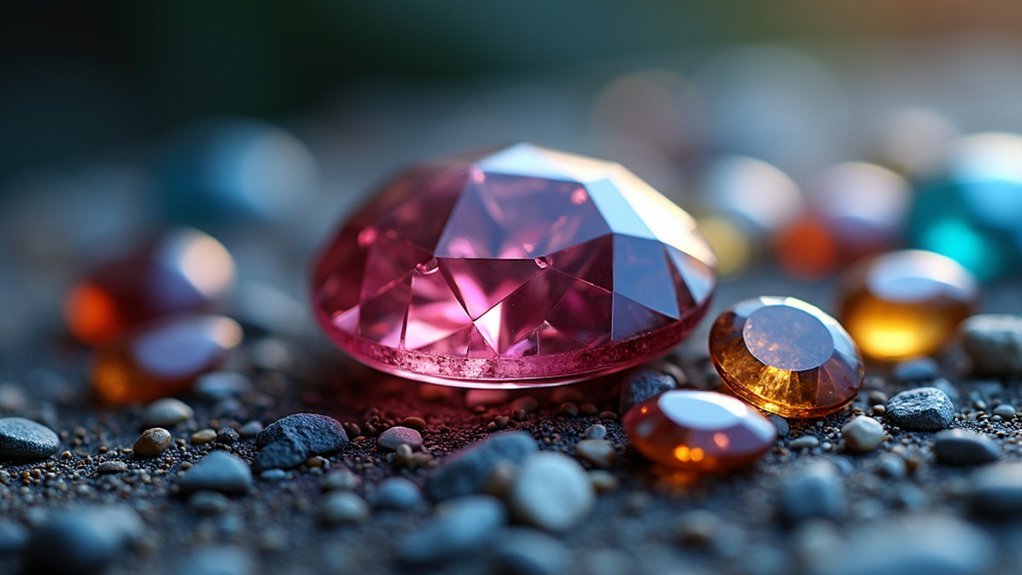
Your cutting sequence and lap selection form the backbone of successful gemstone faceting, determining both the efficiency of your work and the quality of your final result.
Start with coarse laps to remove excess material efficiently, then shift to finer laps for detailed finishing and polishing to enhance your gemstone’s brilliance.
Use a digital protractor for precise angle settings during each facet cut, as slight deviations greatly affect appearance.
Select the appropriate index gear based on your required facet arrangement, ensuring accurate rotation.
Regularly inspect depth consistency and adjust height settings to maintain even meeting points.
Follow a systematic cutting plan, adhering to specified angles and indexes to achieve ideal symmetry.
Perfect Your Pre-Polishing and Polishing Techniques
After establishing your cutting sequence and achieving proper facet geometry, the pre-polishing and polishing stages will determine whether your gemstone achieves professional-level brilliance or falls short of its potential.
Mastering these polishing techniques requires meticulous attention to detail and proper faceting machines setup:
- Clean your gemstones and machine controls thoroughly before each stage to prevent contamination that affects the final finish.
- Set your pre-polish lap at 90º angle with index at 2, adjusting height for minimal contact to create a smooth surface on girdle facets.
- Inspect each facet during pre-polishing for pitting, adjusting height and re-cutting when necessary.
- Clean faceting machines meticulously before polishing crown facets to avoid marring residue.
- Polish star facets first, then crown main facets, finishing with crown break facets for ideal brilliance sequencing.
Maintain Equipment Cleanliness Throughout the Process
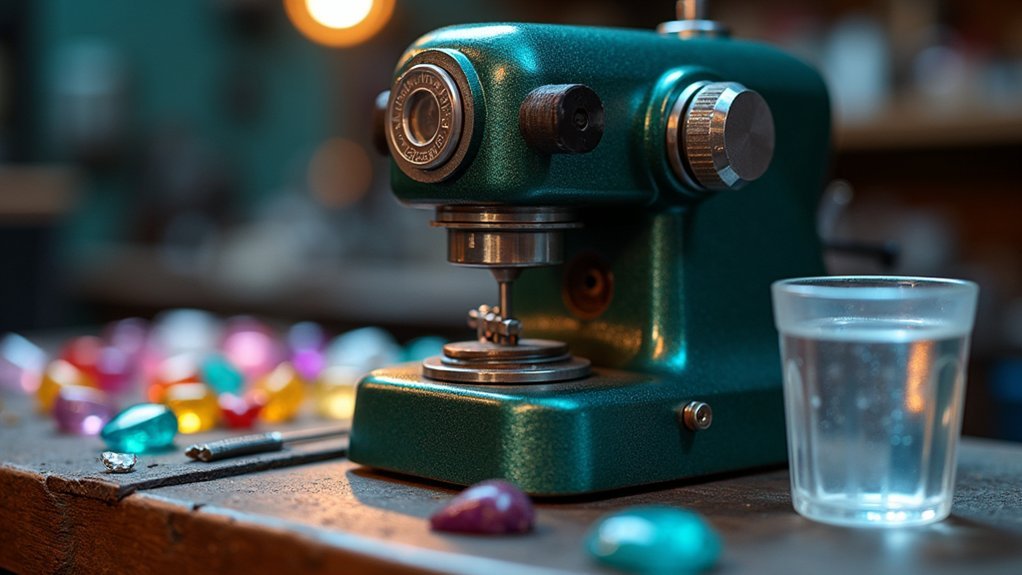
Because even microscopic contaminants can ruin hours of precise faceting work, maintaining spotless equipment throughout every stage becomes as critical as your cutting technique itself.
Clean your faceting machine components regularly to prevent surface contamination that affects your stones’ final appearance. Wipe down laps with a soft cloth after each use to remove debris interfering with cutting and polishing.
Make certain your lubrication water stays particle-free to avoid scratches on gem material. After completing each faceting stage, thoroughly inspect and clean stones to remove any dirt before proceeding.
Implement a systematic cleaning routine that includes cleaning dop sticks and tools. This approach helps maintain equipment properly while creating ideal conditions for precision work.
Frequently Asked Questions
Is Gem Faceting Difficult?
Gem faceting isn’t difficult if you’re willing to learn detailed instructions. You’ll find the round brilliant cut easiest to start with. Your first attempts take hours, but you’ll improve quickly with practice and patience.
What Is the Easiest Gemstone to Facet?
You’ll find quartz is the easiest gemstone to facet because it’s durable, readily available, and forgiving during cutting. Amethyst, a quartz variety, offers vibrant colors that’ll help you build confidence while learning.
What Do You Call a Person Who Cuts, Polishes, and Engraves Precious Stones?
You’d call someone who cuts, polishes, and engraves precious stones a “lapidary” or “gem cutter.” These skilled artisans transform rough gemstones into beautiful finished pieces through specialized cutting and polishing techniques.
How Long Does It Take to Facet a Gemstone?
You’ll spend six to eight hours faceting your first round brilliant gemstone as a beginner. With practice, you can reduce this to one or two hours once you’ve mastered the techniques.
In Summary
You’ll achieve professional-quality faceted gemstones by mastering these five essential techniques. Don’t rush through any step—precision takes time and practice. Keep your equipment spotless, maintain consistent angles, and develop a systematic approach to your cutting sequence. With dedication and attention to detail, you’ll transform rough stones into brilliant gems that rival those cut by experienced professionals. Remember, every expert was once a beginner who refused to give up.

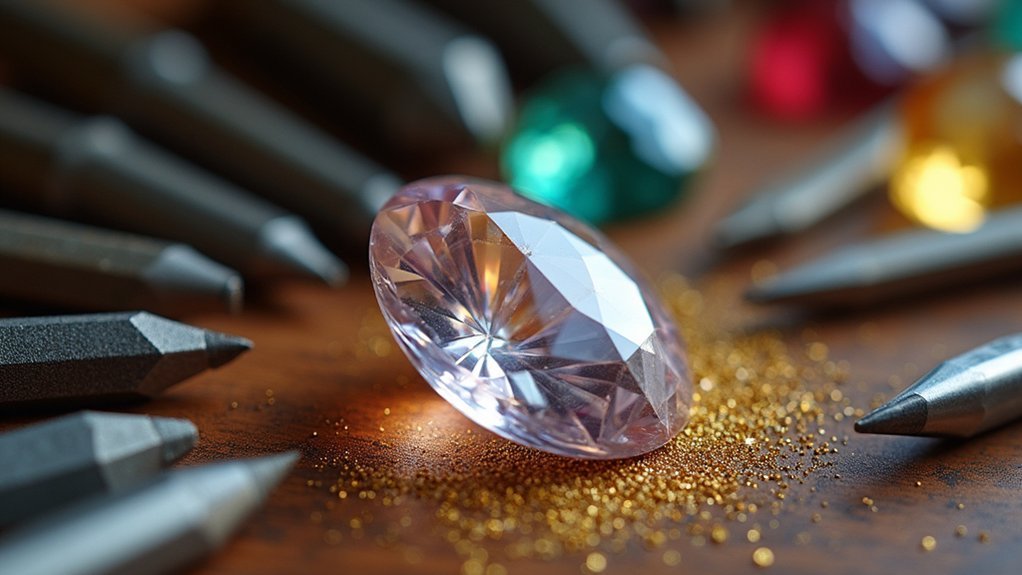
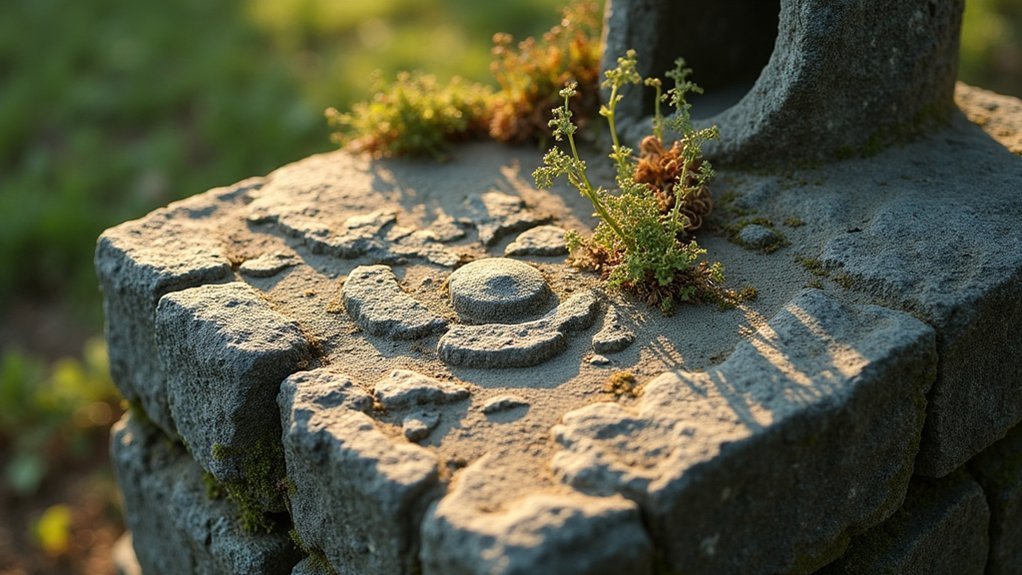

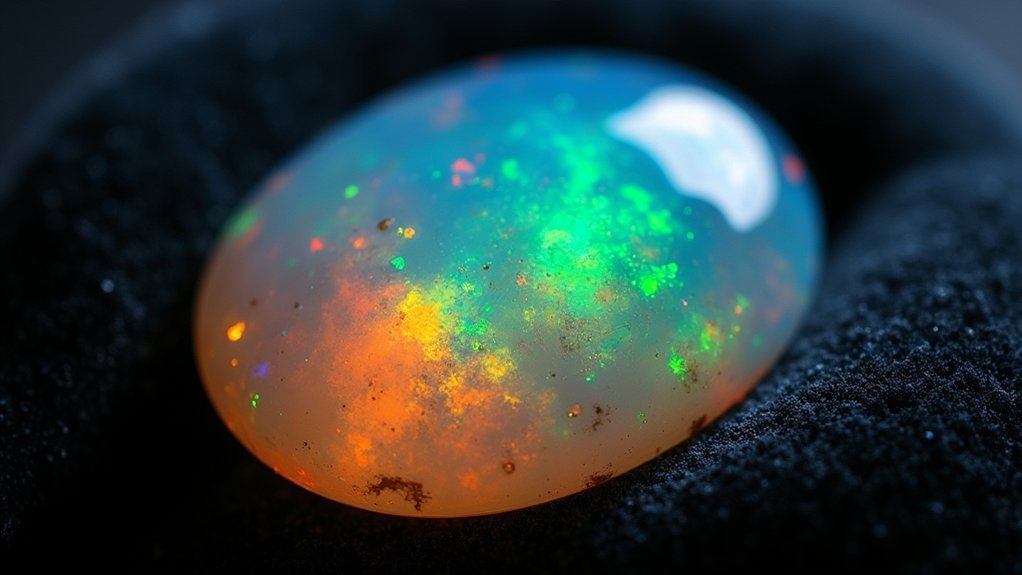
Leave a Reply